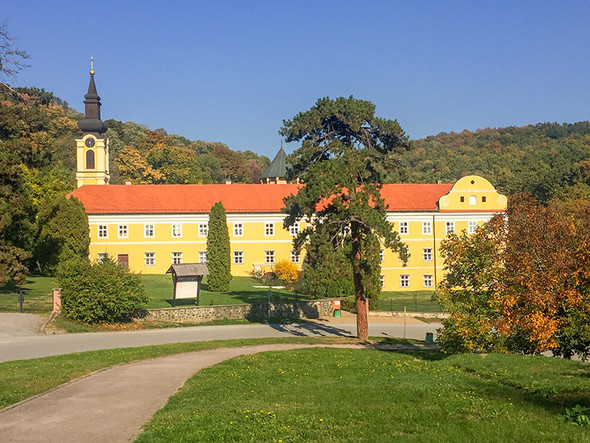If there are forgotten wine regions and long-forgotten stories, Fruska Gora is definitely the saddest one of all. Serbs call this region embraced by the Sava and Danube rivers Srem, Croatians Srijem, and Hungarians Szerém but it was also called as Syrmia long ago by ancient Romans. This land was a promise land; the promise that there is something worth fighting for as fruits ripen, rivers provide water, and animals have pasture. And who was the one who did not keep this promise? We ourselves, naturally. But the promise lives on, without any change.
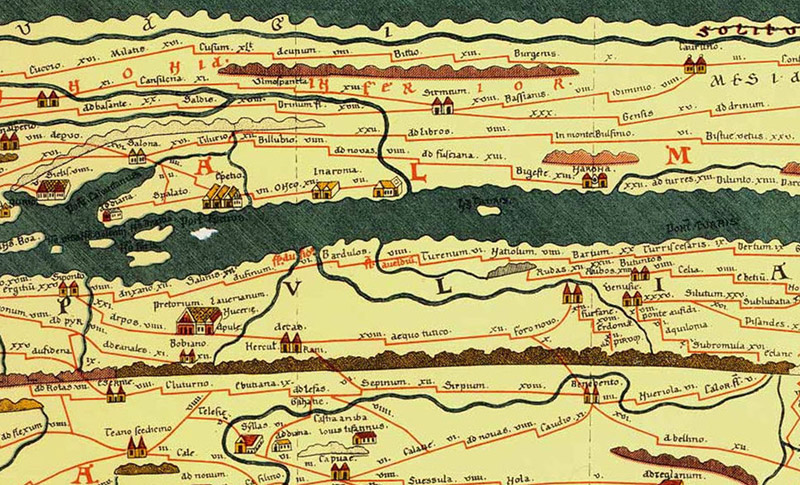
Fruska Gora and the town of Sirmium in an old Roman map called Tabula Peutingeriana
Inside the northern Srem/Srijem region (I’m using both the Serbian and Croatian names because today these two countries lie in the area) bordered by the Danube, a merely 80-kilometre long and 15-kilometre wide mountain range can be found. Its highest peak is only 539 metres, still it stands as an island in the middle of the plain and with its steep valleys, gullies, gentle slopes and forests, it does look like a real mountain. Maybe it really is one. This is Fruska Gora, meaning the Frankish mountain, as the Serbs and Croatians call it even though the Franks had the region occupied only for 20 years. Hungarians used to call the mountain Tarcal, as a reference to one of their chiefs at the time of the Hungarian conquest of the Carpathian Basin. It was these mountains, its southern, eastern and northern(!) slopes where probably the most famous wine of the Middle Ages was grown. The most famous wine all over the world.
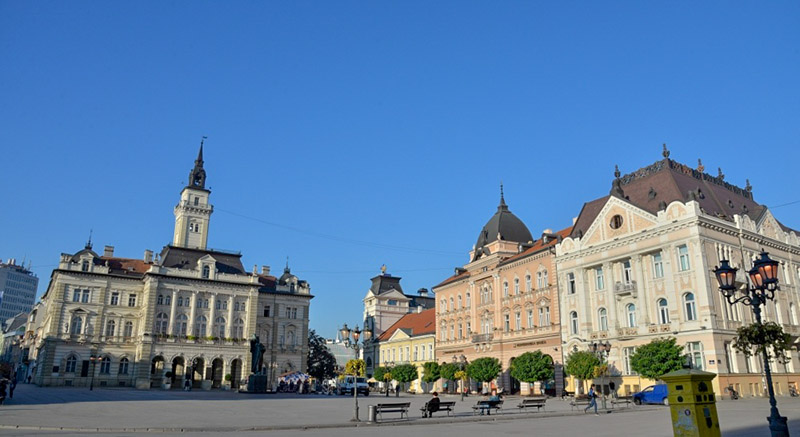
Novi Sad by Piroska Koltai - Wine a'More Travel
The period of Middle Ages differs somewhat depending on which historian you ask, but roughly we can say that the discovery of America (in 1492) marked its end. In Hungarian history the Middle Ages ended in 1526, the year when the Ottoman army defeated the Hungarians besides Mohács and occupied the majority of the country for 150 years. This was also the year when Szerém/Srem/Srijem wine was destroyed for good.
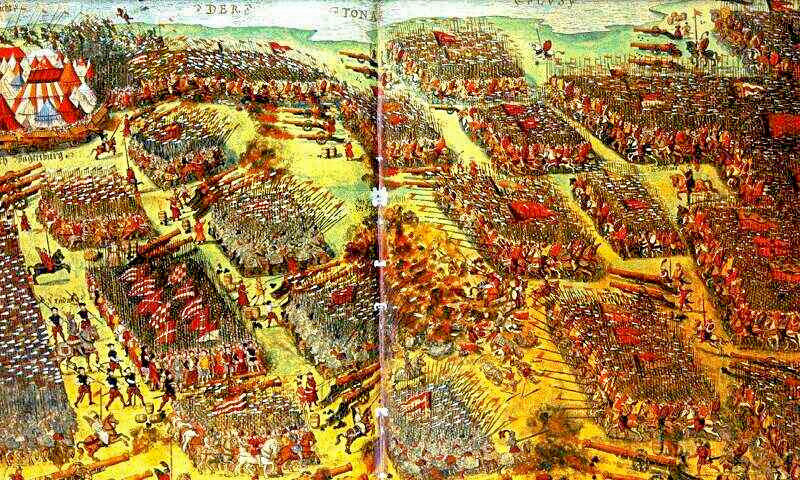
Johann Schreier: A mohácsi csata 1526 (The Mohács battle) From the book "Mohács emlékezete." Szerkesztette (editor): Katona Tamás, Magyar Helikon, Budapest, 1976
Well, well, surely, I can talk about anything I want but what made that wine so famous? Obviously, we can only make assumptions but one thing is for sure: wine was valued for other things than today. Firstly, naturally, was whether there was any wine at all. If there was some, all for the better. Secondly, could it be transported? In other words, how long it could be stored without turning into undrinkable vinegar. Thirdly, its sweetness. Strange as it may sound today, it was a really significant aspect in an age when there was no sugar in every corner shop and sweetness did not come in the form of Milka chocolate or Coke.
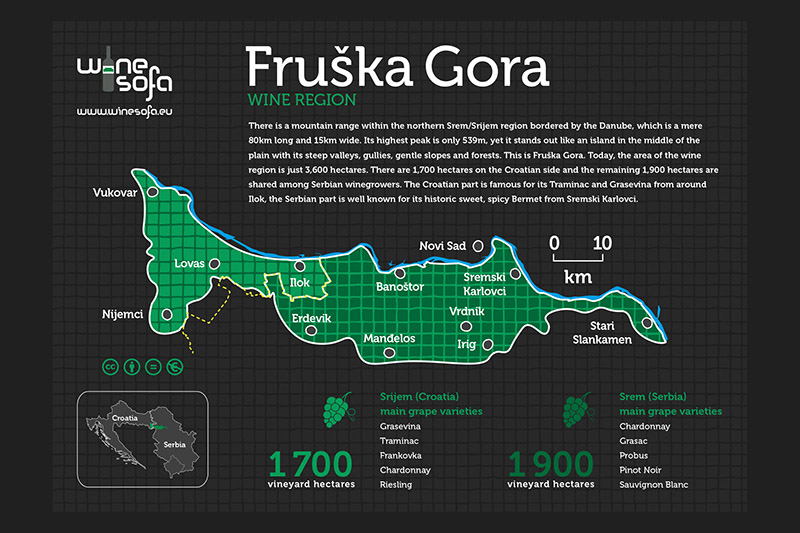
Fruska Gora infoposter by Tamas Doma
Therefore, the wine made in Fruska Gora back then must have been sweet (if it was indeed so famous), with a big body, beautiful acids and transportable as far as Western Europe and the northern towns of the Hanseatic League in the barrels (as there were no bottles back then). And what about the grape varieties? Surely, the varieties before the phylloxera disease would be impossible to reproduce but presumably Kadarka was grown back then, (some say that Serbian viticulturists brought it with them when moving north but others say it had appeared even earlier when Fruska Gora was still part of the First Bulgarian Empire), together with Slankamenka, Bakator, Szerémi Zöld and Szigeti (means ‘from the island’ in Hungarian). This latter grape variety is well-known even today, although under the name of Furmint, and according to some researchers, the home of this variety is Fruska Gora which used to be a real island in the Pannonian Sea (hence its name) and looks just like one even now.

Probus the emperor (photo: Jastrow, wikipedia)
But when was “back then” exactly? It seems certain that even Celts made wine in this region but the real success came with the ancient Romans. One of their emperors, Marcus Aurelius Probus (let’s call him Probus to avoid confusion with the other Marcus Aurelius), who was born around here, made his soldiers drain the marshes of the Sava and Danube rivers and ordered them to make huge grape plantations in the mountain called Mons Almus at that time. His legionaries were infuriated by having to do civil work and killed their emperor who made it to wine history books because of his fate.
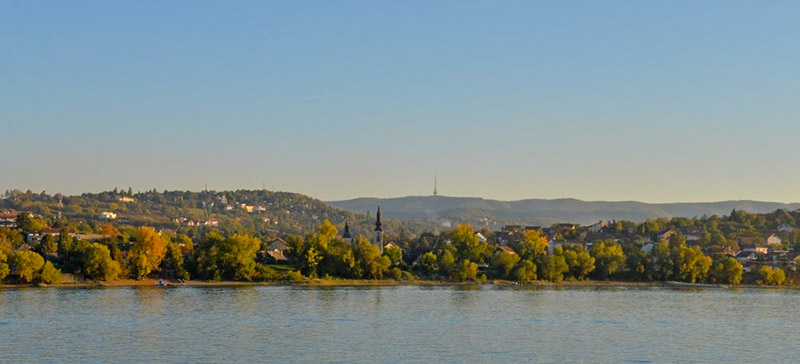
The Fruska Gora from the other side of the Danube in Novi Sad by Piroska Koltai - Wine a'More Travel
Later Gepids and Longobards came, followed by Franks and Bulgarians, Hungarians and Serbs, Croatians and Turkish, then Serbs again and Croatians, Germans, Austrians, Hungarians and a few Slovaks, as well, so basically everyone who was ever around. Not to mention the lots of wars for religious reasons (Hussite Wars), for conquests (Ottoman Turks), reconquering (Holy League), cataclysms (World Wars I and II) and fratricidal wars (Yugoslav Wars).
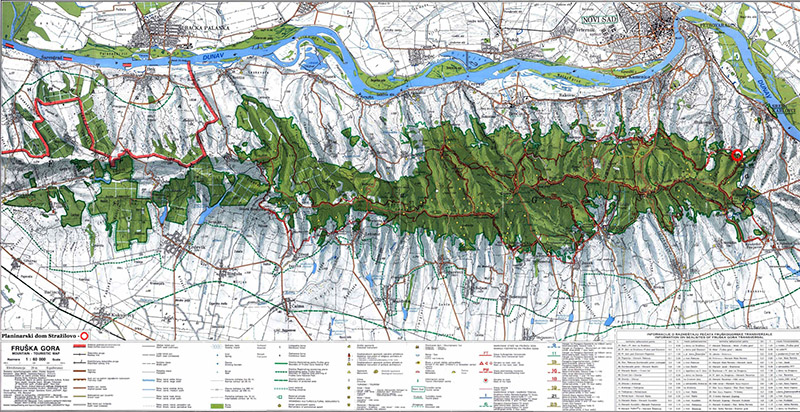
A new Fruska Gora map from Ilok (Croatia) to Sremski Karlovci (Serbia)
I could say that Fruska Gora is the saddest mountain in the world. Why? Today there is no sign of any sadness. Not tourists see it tragic but those who know the history of the region and its people, and maybe for even those who realize its potential, knowing all that has been listed above. That is why it would be important for more and more wine lovers to visit this place, and this demand should be reflected in the emergence of new wineries in Fruska Gora. It is also important that Serbs, Croatians and Hungarians would exchange their practices and tell their stories to each other. This requires a great deal of openness, I know. And in Central and Eastern Europe as well as in the Balkans, people usually tell their stories by painting others black and there are only few who hear the truth in the stories of the others. However, I believe that we cannot give it up, we have to continue telling our stories incessantly but at the same time listen to everyone else’s stories so that in the end, a common story, a shared history could be created that will most probably be closer to the truth than the fragments we hear today. And finally, Serbian, Hungarian and Croatian (let’s not forget Czech, Polish, Slovak, Austrian, Romanian and Bulgarian) heroes who joined forces to defend Europe from the Ottoman army.
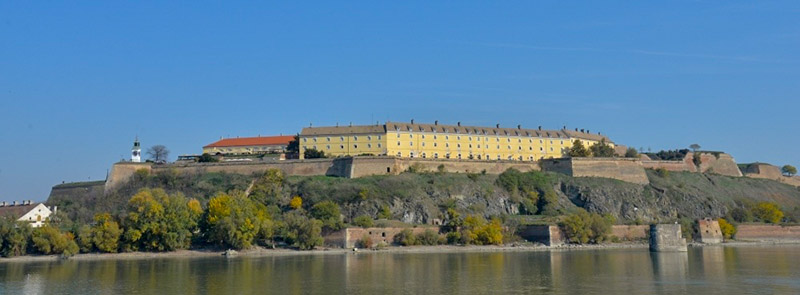
Petrovaradin fortress by Piroska Koltai - Wine a'More Travel
My story ended with the Turks occupying the region in 1526 and the famous Szerém wine was gone. According to a legend, it was such a great shock that upon hearing the news the Hungarian king cried:
Szerém is lost, from now on we have to drink Tokaji!
He couldn’t be scared for long because only a few months later he was also dead on the battlefield near Mohács. Hungarians left Fruska Gora then and Slavs (Serbs and Croatians) moved in the mountain. (In connection with Petrovaradin or Pétervárad in Hungarian, the battle of 1716 is often mentioned when Prince Eugen of Savoy led the Christian army that defeated the Turks thus forcing to sign the Treaty of Požarevac and freeing Belgrade and Timisoara from occupation. On the other hand, the siege of 1526 is almost never mentioned when in the end the Turkish won but hardly 2,000 people protecting the castle held on for weeks against the army of 60,000! Serbs, Croatians and Hungarians were fighting and dying side by side to protect their homelands. The wonderful novel by István B. Foky preserves their story for future generations.)
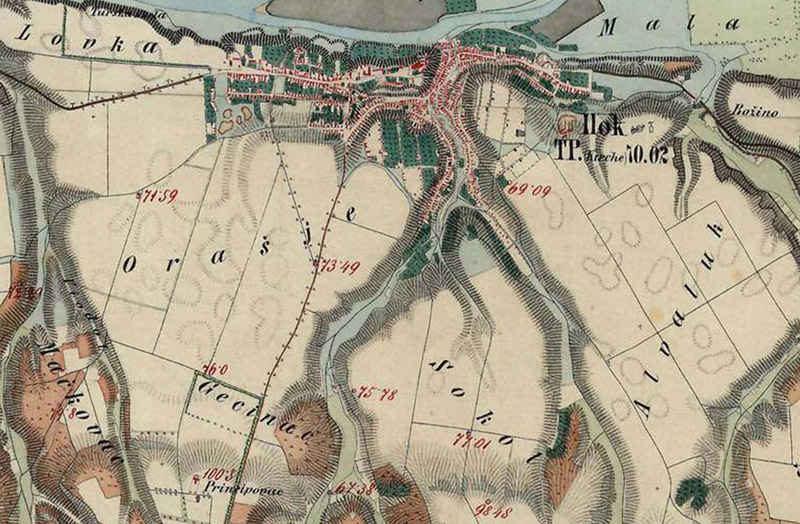
An old map of Ilok
It is also a must to talk about the capital of Fruska Gora, Ilok. Its spelling might look strange now but back then Ilok (called Újlak in Hungarian) was one of the most significant towns of Szerém/Srijem/Srim in the gentle slopes of Fruska Gora, situated besides the Danube. By the 14th century its population reached 10,000 equalling that of Buda. Its landowners were the Ilocki/Újlaki family who originally had possessed estates in nowadays Slovakia (in Nyitra county) but later moved to Ilok thanks to some homestead exchange. The most prominent member of this family was Nicholas of Ilok (1410-1477) also possessing the Voivode of Transylvania title; what is more, the king (Matthias Corvinus) gave him the northern Bosnia areas repossessed form the Turks as present (for helping him to stop a plot against him), and let him be crowned the King of Bosnia in 1471. His son, Lawrence could only bear the title of Prince of Bosnia without having any real power.
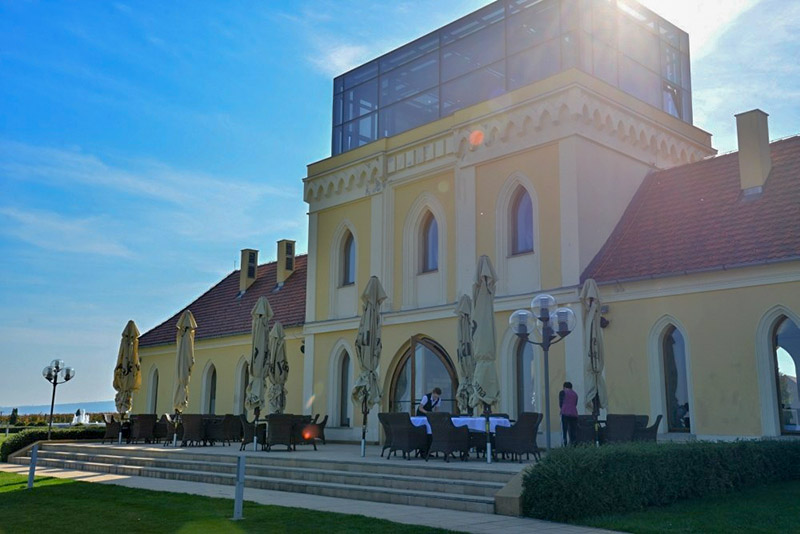
The Principovac castle of Ilocki Podrumi by Piroska Koltai - Wine a'More Travel
A tiny but interesting piece of info: the residents of Szeged, located in the southern border of modern Hungary, were the biggest landowners in the Tarcal mountains in the Middle Ages and they were the ones transporting the Szerém wine to the north via the Tisza river up till Tiszalúc (where traders from Kassa/Kosice and Poland took the cargo over), and later up to Poland and to Buda using the Danube. Before these Szeged traders, the largest merchant of the region was the Cistercian Abbey in Bélakút (Belafons). In the monastery established at the beginning of the 1200s monks arrived from the French Champagne region and its charter also mentioned grape donations. Orthodox cloisters emerging in the 1300s were also a significant factor and wine provided them with vital income.
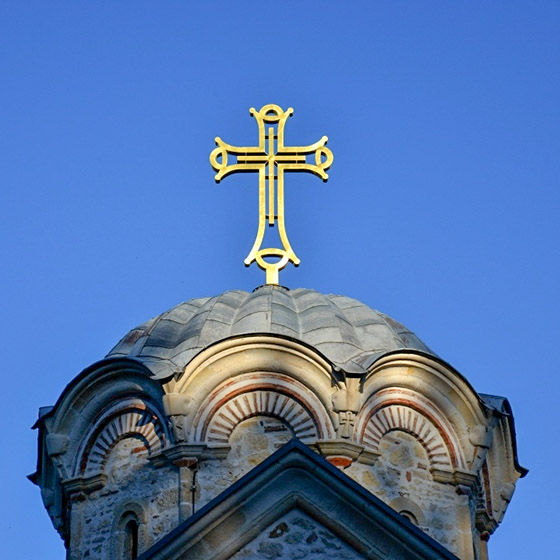
Holy Cross (Staro Hopovo Monastery) by Piroska Koltai - Wine a'More Travel
Did the 170-year Ottoman rule really mean the end of the wine region? We can say it did since no more Fruska Gora was drunk at western European tables. This, however, is slightly contradicted by the data we have about local wines during the Ottoman rule imported by Serbian traders from Karlovci to mostly Szeged, Csongrád, Nagykőrös and Kecskemét markets and these wines were sold at a much higher price than anything else. So most probably grape and wine production survived even though there were hardly any vines left when the area was recaptured and surveyed after the peace treaty had been signed in Sremski Karlovci (in 1699). It was mostly uncultivated lands and empty cellars. The revival of wine culture has evidently Serbian-Croatian roots resulting in different grape varieties and the transformation of wine-making. The previously known Bermet wine became more dominant and the former sweet wine was kept but transformed. How was that possible? Well…
Tokaj and Fruska Gora
According to a Hungarian legend that each and every Hungarian wine historian sticks to, the forerunner of Tokaji Aszú is to be found in the Tarcal mountain, in today’s Fruska Gora. It is also imaginable that the Furmint also originates from the same place (which is indeed an option) just like the method of using grapes infected with Botrytis and then dried. Wines made from raisin in the Greek shores of the Mediterranean met with Hungarian winemaking for the first time here at the former Byzantine borderland. So, I wouldn’t be surprised if those early sweet wines from Szerém had been some kind of rudimentary Szamorodni wines. There is an interesting parallel that in the Hungarian language the name ‘Tarcal’ appears only in two places: one is the name of Fruska Gora, the other is a village situated a few kilometers from Tokaj. What is more, this latter is one of the best Aszú-production places even today. Moreover, a significant ecclesiastical dignitary, György Szerémi living at the end of the Middle Ages was born in Srem and became a landlord later in Tokaj. His name, Szerémi is also borne by a single vineyard there (later changed to Szerelmi). Abundant data prove that the landowners (Durad Brankovic, among others) fleeing north from the Turkish attacks settled around Tokaj and cellarmen also moved there where production circumstances were the most similar to those in Fruska Gora. Tokaji Aszú was born and the Tokaji wine became popular that time. Yes, all these may be mere coincidences. However, they did happen at the same time and coincide so much that only a single data from the archives is missing and we could know for a fact that Tokaji Aszú was born in the Tarcal mountain, i.e. in Fruska Gora. (Research is hindered by having, in addition to most information stored in Szeged, archived data probably in Kosice, Bardejov and Krakow – as some had already been found – since these towns were the biggest buyers of the Szerém wines.)
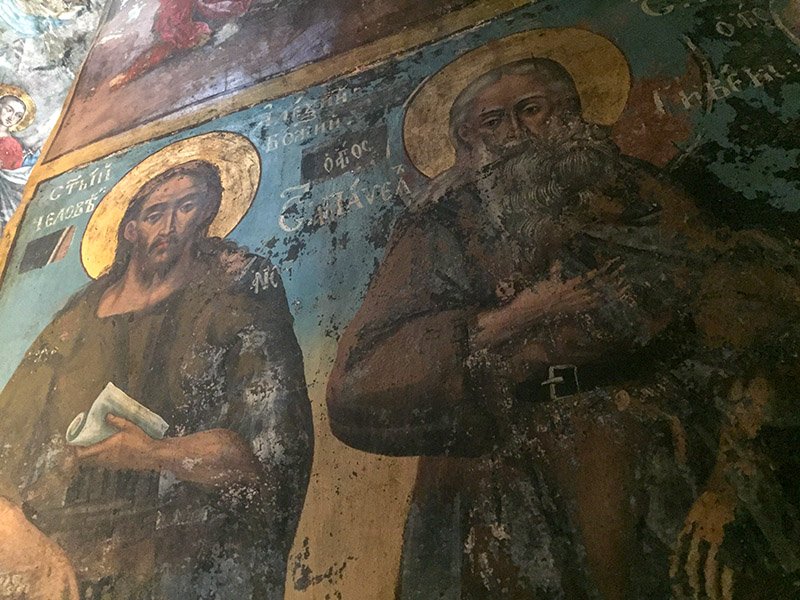
Krusedol Monastery by Daniel Ercsey
The grapes of Fruska Gora reappearing to the Habsburg Empire, more precisely to the Kingdom of Hungary, from the Turks had been taken stock of already in 1833 (by Ferenc Schams) and then white wines were recorded to be sold at a higher price than red ones, mostly thanks to their use by Austrian traders to soften their own, more acidic wines. It is funny to consider that the now so famed Wachau wines were once mixed by some with Fruska Gora wines to make them drinkable. Schams also noted that the so-called Karlovitz sparkling vermouth (Tropf-Wermuth) from among the vermouth wines was so excellent that it made quite a profit in Vienna. The most important data comes from the census of 1875 by Károly Keleti. It reveals that the wine region was merely of local significance by then and after the 1874 harvest 50,062 hectolitres of white and 17,217 hectolitres of red wine were stored in the cellars. That time the 63,705 hectolitres of siller wine (produced then by mixing white and red wines, resulting in a redder, more bodied and simpler wine with refreshing, good acids drunk by workers in the vineyards) qualified as notable and interestingly, 65 hectolitres of Aszú were also recorded. The area of the wine region was 22,223 cadastral acres (equalling 12,789 hectares) growing mostly Kadarka, Dinka, white Góhér and Blaufränkisch(!). This latter clearly shows the influence of German settlers.
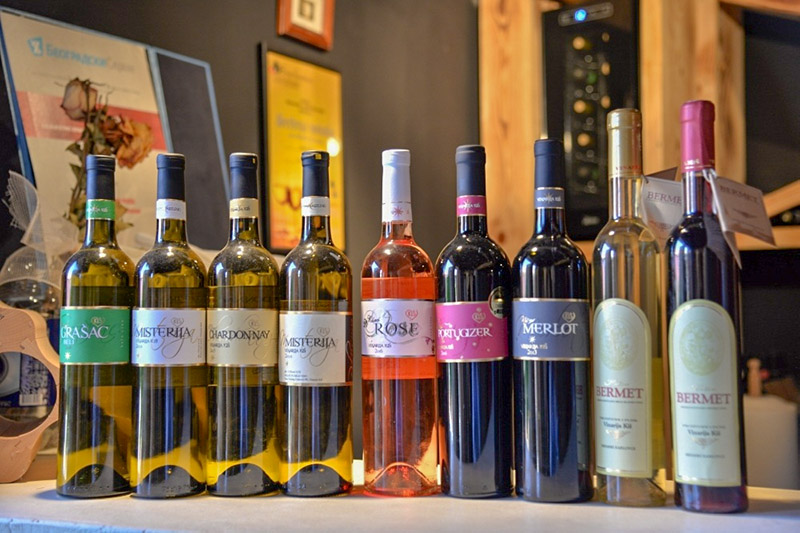
Bermet wines in the end of the line in Vinarija Kis by Piroska Koltai - Wine a'More Travel
The production of vermouth (Bermet) also increased, and the sweet wines mixed with herbs gained popularity among the bourgeoisie too with ladies drinking it in confectionaries. After the Turkish era the appearance of the Italian Odescalchi family in Ilok was also of great significance. Even though its family members had ties mostly with Nyírség (Nyírbakta) and Nitrianska Streda and Solcany in Nitra region in today Slovakia, as well as Subotica (that time Szabadka) and Start Moravica in Backa, with Pozsony (Bratislava, the capital of Slovakia today) and Budapest, they (more precisely, their estate stewards) were the ones who discovered the ideal circumstances Ilok and its surroundings offered for the production of white wines, especially Traminac and Italian Riesling, against previously dominant blue grapes. This was how the story conquering the whole world started and not even Communism could annul it.
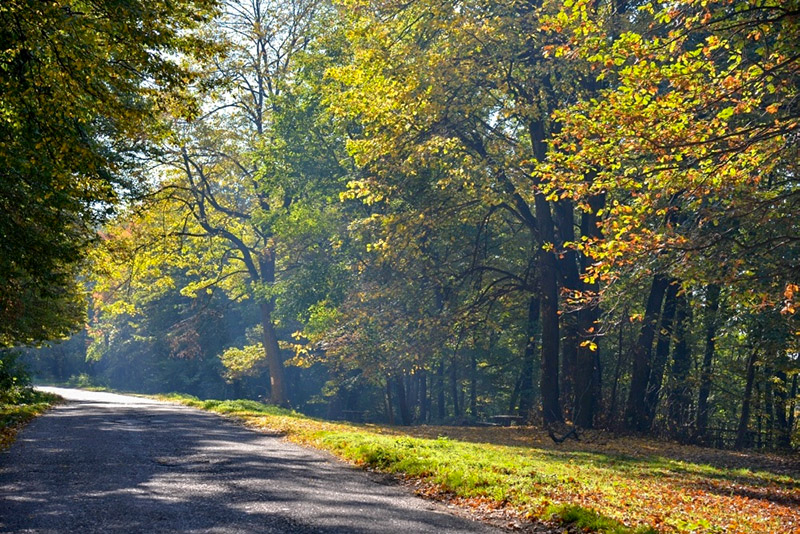
On the ridge of the mountain by Piroska Koltai - Wine a'More Travel
This idyllic picture was destroyed by phylloxera followed by the 20th century with its two world wars and other battles which made people behave like animals. The wine region area is merely 3,600 hectares today, 1,700 hectares in the Croatian side and the remaining 1,900 hectares shared among Serbian winegrowers. The Croatian and Serbian sides of Fruska Gora developed differently even during the Communist regime of Yugoslavia so any deviations experienced today cannot be explained by the differences between the now independent Serbia and Croatia, but to get the big picture a brief overview is required.
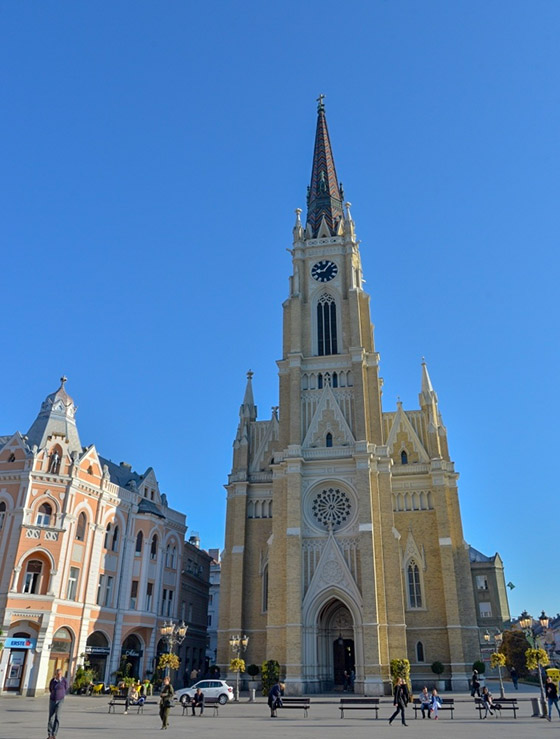
Novi Sad, the roman catholic churc by Piroska Koltai - Wine a'More Travel
Communism did not spare Central and Eastern Europe and quantity was preferred over quality. On the Serbian side of Fruska Gora it was sparkling wine production that was able to use up the quantity of grapes produced for a while. That time private grapes and wine made thereof were banned so owners either left loads of grapes unharvested or collectively-owned agricultural cooperatives used them. And you know what is everyone’s is nobody’s really. A large cooperative was also established in the Croatian side; its legal successor is the cellar named Ilocki Podrumi. There wine-making was maintained; what is more, probably the best wines of Yugoslavia were produced there this is why the brand name Ilocki Podrumi and the grape variety of Traminac have not lost their popularity. This continuity and the fact that one of the wines (from Ilocki Podrumi) made in the Communist Yugoslavia was consumed even by the British royal family (even before the Communist era) is clearly visible today in the difference between Srem and Srijem as brand names. On the Serbian side it is not really clear what they intend to communicate; the mountain (Fruska Gora), the region (Srem) or the towns (Sremski Karlovci or Irig)?
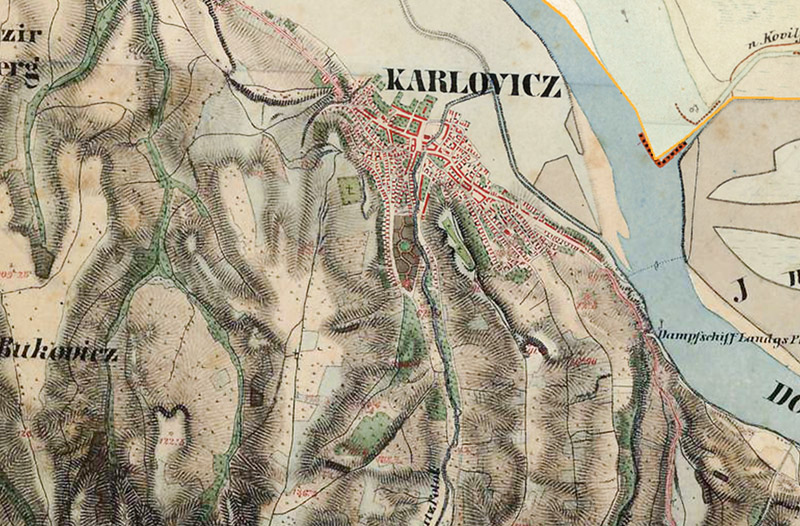
An old map of Sremski Karlovci
At the same time, Croatians have chosen the town of Ilok. The same applies to grape varieties. The Croatian side was loyal (obviously thanks to political decisions, clear-sighted agronomists and agile party secretaries) to its traditions (Traminac grape variety, Grasevina, Frankovka) rooted at the beginning of the 1700s. The Serbian side, however, had lost almost all its roots by the time privatisation started. This explains the incredibly wide assortment of varieties offered in Serbian wineries, and everyone marches under different flags of a selected grape variety or raw wine-making. Sadly, the one and only cornerstone, Bermet is failing to satisfy modern wine-consumers, meaning it is not trendy enough. I can see two possible ways out (though these reflect my personal opinion, mind you): either the Croatian example needs to be followed by planting Traminac, Grasac (the Serbian name of Grasevina) – a little at least by each winery – and the communication (not to be confused with the production!) of the wine region needs to be adjusted thereto; or the 500-year-old traditions must be revived and Kadarka, Furmint, Bakator and Szerémi Zöld need to be replanted. The second one is the hard way, I know. Certain producers might feel they are asked to give up their identities and, as I mentioned it above, I’d force them to take over my identity at the expense of theirs. But I would never do such a thing, ever. These varieties are a part of the regional identity; they have influence where they have written and documented past. If winemakers take up this line where it ended (not forgetting Bermet and naturally, continuing to grow the current varieties, too), that moment they will have a communication tool in their hands that only few do in Europe. A traditional wine region dating back to the 1200s and with written records! Why could not today’s winemakers be proud of this? Hungarians in Szekszárd are proud to tell that they had learned open-tub fermentation of red wines from Serbs. They tell everyone that Kadarka was taken over from the Serbs. Does it do any harm to the German-Hungarian identity of Szekszárd? I don’t think so. Obviously, there is a third way. Srem in Serbia is partly a mountain with large-scale, Chardonnay-based leading wineries (one, to be precise) and partly a hipster world based on raw wines. The problem is that this internal conflict almost rips the region apart; it makes it impossible to create an image for the wine region. This would be key as the country is more important than producers, and community interest is more important than individual interest.
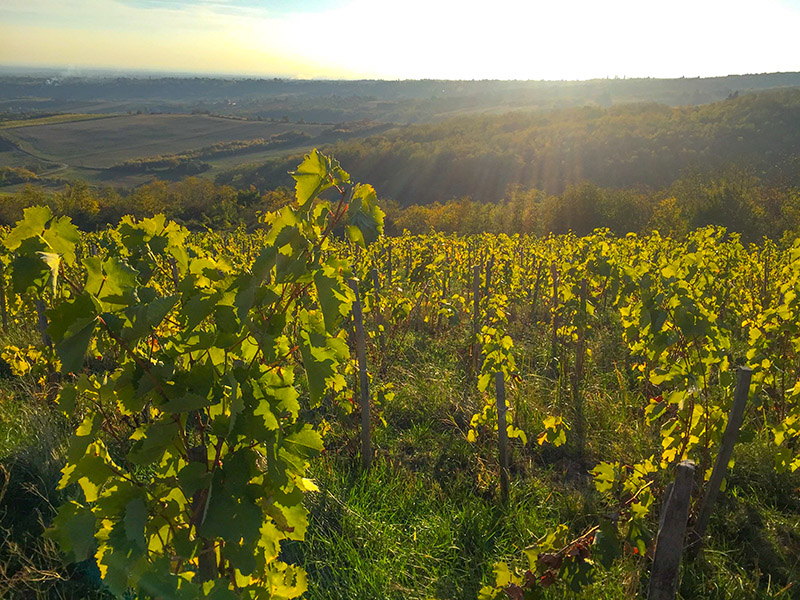
Furmint plantation in Srem by Daniel Ercsey
A little geography and other adventures
A friend of mine told me some ten years ago that Fruska Gora starts in Vukovar (Croatia), at the pharmacy standing in the corner of Dr. Franje Tudmana Street and Ljudevita Gaja Street. This definition reminded me of Kafka but I loved it so much that I need to share it with others. The message is clear. Geographically speaking, the hills of Fruska Gora start ascending here only to become more prominent to the east, forcing the Danube to change its course heading south, and then they reach their heights in Serbia only to gently slope again below Sremski Karlovci stretching all the way to the south until Stari Slankamen where the Tisza meets the Danube. When listing wine-producing towns and villages with vineyards mostly facing north (to mention the major ones for easy orientation) there is Vukovar, Lovas and Ilok in Croatia, Banostor, Beocin, Sremski Kamenica and Sremski Karlovci in Serbia lying along the Danube bank (except for Sremski Karlovci where the Danube slowly turns south). On the southern side of the mountain the Croatian Nijemci and the Serbian Erdevik, Mandelos and Irig are located. As for the minerals the mountain is composed of, crystalline slates and limestone dominate but marl, loess and gritstone are also found. Volcanic rocks are mostly represented by rhyolite quartz trachyte and trachyte and acidic tuff from the seawater. The climate is continental with cooler winters and hot summers, with an annual precipitation of around 600 mm. Interestingly, (and similarly to the Hungarian Neszmély wine region) old records say, sometimes the grapes in the northern slopes ripened two weeks earlier than in the theoretically better southern slopes. The reason is the proximity of the Danube that changes the microclimate and the water reflects the light back onto the vines.
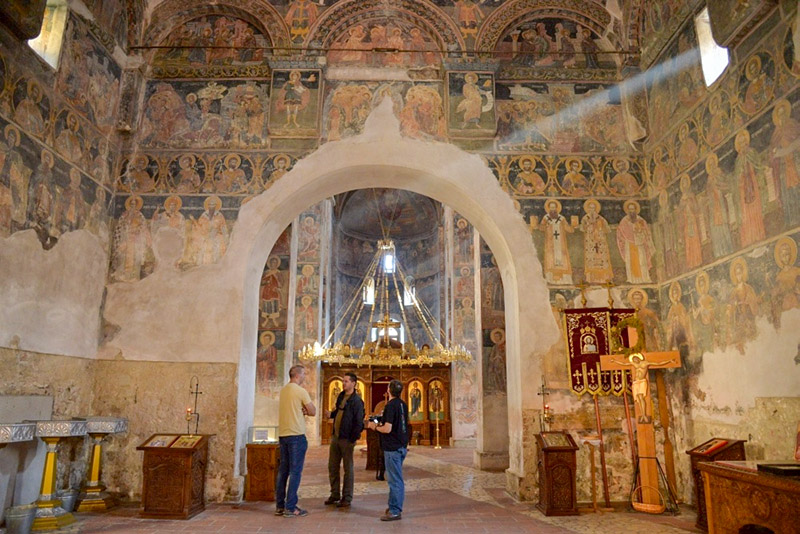
Monastery interior by Piroska Koltai - Wine a'More Travel
As for the sights and tourism, this is where the situation gets more difficult. Neither Fruska Gora, nor the Srem/Srijem region has any outstanding monuments or natural sights. Still I fell in love with the place at first sight and can only recommend a visit there. From among the capitals nearby, Belgrade is the closest, but if you visit Timisoara, Pécs or Szeged, all of them are only a few hours’ ride away.
For a two-day trip: if you heed my advice, start the visit in Novi Sad, the town built in the former Vásáros-Várad. Take a walk in the Main Square, pop in the huge and empty Catholic cathedral, see the Secession-style synagogue designed by Lipót Baumhorn, then walk down to the Danube bank and let yourselves be carried away by the sight of Petrovaradin. Awesome! If you want to make great photos from the castle, you’d better get up and get to work early when the rising sun shines from behind and bathes the city below in gold light. Anyway, there is not much else to see in the castle but the clock tower is still worth a visit. The next stop could be Sremski Karlovci where you can feel the atmosphere of the Austro-Hungarian Empire for a moment, at least when looking at the buildings. Not to mention the cakes! Local women decided to make bundt cake their speciality, so this wonderful Austrian cake is sold basically everywhere. Having admired the town and visited the beautiful iconostasis of St Nicholas Church, stroll up the Peace Chapel erected as a memento on the place where the above-mentioned peace treaty was signed in 1699. I have never once found this chapel open, but you might be luckier than me.
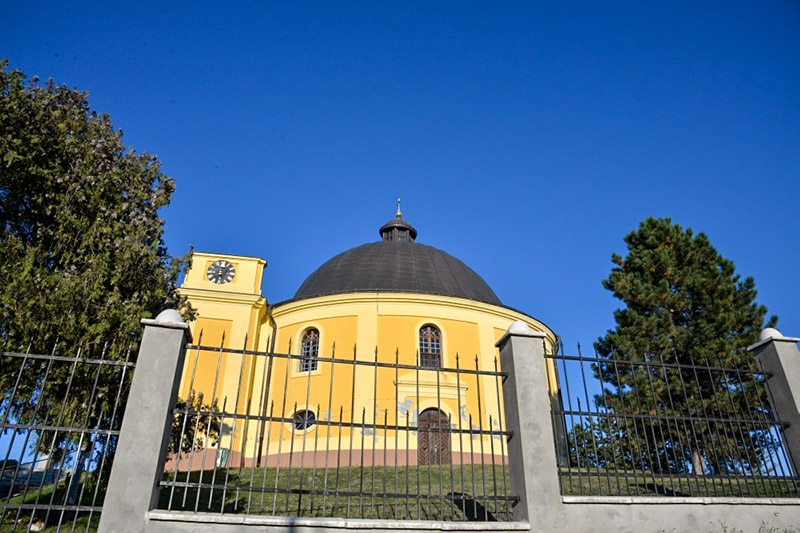
The Peace Chapel in Sremski Karlovci by Piroska Koltai - Wine a'More Travel
And if you are already there, do not miss the best winery of the region, Vinarija Kis. Drop in to taste Grasac, Portugieser, Bermet, and let yourself embrace the atmosphere of the place. The program so far is enough for two whole days so take the following suggestions as some kind of supplementary programs. Why not see Emir Kusturica’s film Black Cat White Cat one evening and saunter to Stari Slankamen where the loess wall opposite the mouth of the Tisza river looks great from the Danube bank. Some scenes of the film were shot there (its beginning, for instance) and even the ruins of a Roman fortress can be seen on the top of the loess wall. If you like long-forgotten stories and are hungry for some “Atlantis experience”, take a bottle of Cava (no mistake, I do mean the Catalan sparkling wine) and visit Zrenjanin known as Becskerek-Beckerek-Betschkerek-Becicherecu for ever but renamed after a Banat partisan. Take a seat at the Bega bank, open the Cava, take a sip, close your eyes and imagine that it is the November 1735 and around 2,000 Catalan people arrive at the flatlands nearby. They are old and young, soldiers and clerks, aristocrats and poor people alike. These are Barcelona residents fleeing after the War of the Spanish Succession from their Habsburg-supporting city. They had been living in Vienna since 1714 but the situation could not be maintained and they were forced to go to Banat freed from Turkish invasion (in 1716). The construction of a town was soon on the banks of the Bega river, south from the huge lake that once was there. The town was named New Barcelona. Construction took off in 1737 but by the summer of 1738 it had lost its momentum and the last of the Catalans had left the area. During the two and half years, most of them had died of the plague, malaria and the never-ending work that was unusual for them as city people. Their memory is only preserved in nothing else but maybe some naughty Spanish looks by their late descendants.
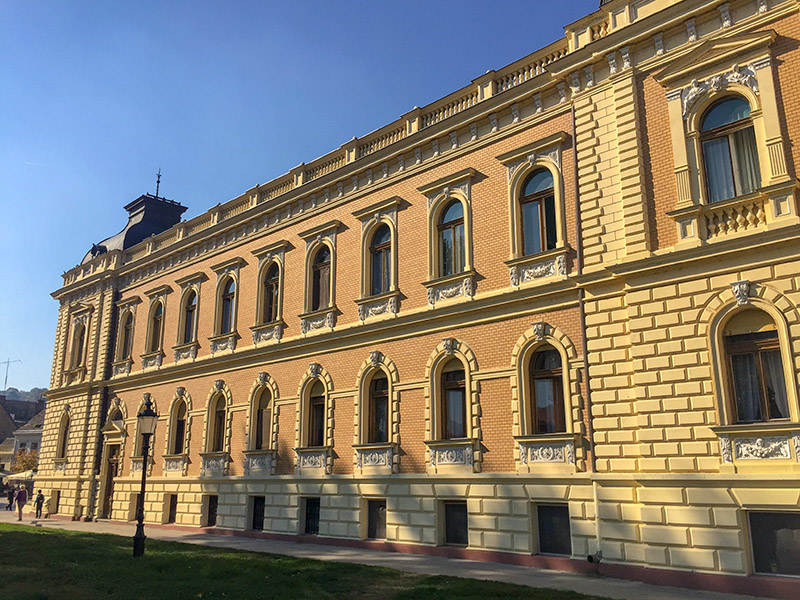
Sremski Karlovci by Daniel Ercsey
For a four-day trip: after the two-day trip above, visit Ilok at the other end of Fruska Gora. It is a good idea to pay attention as the border-crossing point in the mountain sometimes closes at 6 p.m. and if it is closed you have to go back to Novi Sad, cross the Danube and travel to llok on the opposite side (from the direction of Backa Palanka). The little town has a wonderful atmosphere, the Danube bank is beautiful, the streets are winding, buildings are ornamented, and the castle hill with the castle ruins and the church preserving the ashes of Saint John of Capistrano, the Renaissance palace and obviously, the tourist centre and wine hotel of Ilocki Podrumi. Looks just like it belonged in a fairy tale.
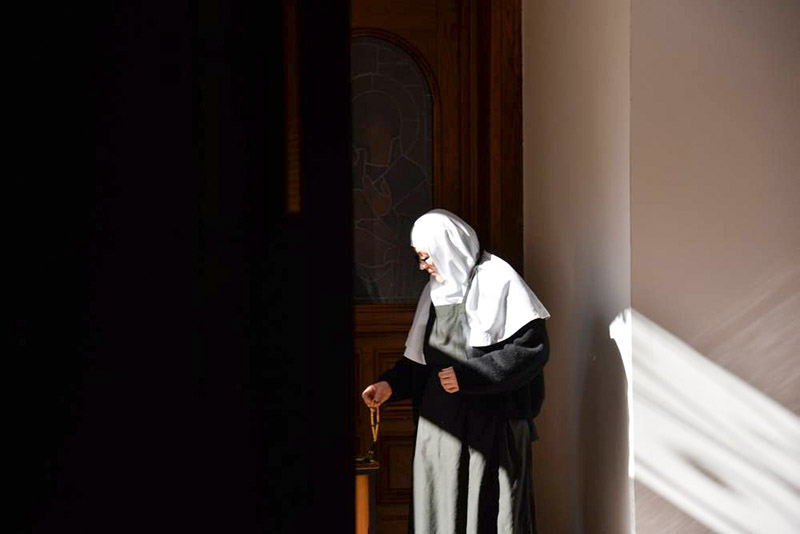
Grgeteg Monastery by Piroska Koltai - Wine a'More Travel
Do not miss the estate centre located on the top of the Principovac hill; it is a renovated Classicist castle and a tasting room surrounded with vineyards and a golf course. Ilok truly deserves a whole day. The next day (on your way back to Novi Sad), already on the Serbian side, go uphill to Koruska or Banostor villages to admire the most wonderful river of Europe, the Danube. Turn south towards the mountains before Beocin, ride all the way up the serpentine road, up till the highest point, then follow the partisans’ road along the ridge to the east until the crossroads where the left road takes you to Petrovaradin and Novi Sad, and the right road to Irig. It might be an idea to have lunch on this spot, in the small street-side restaurant which offers great lamb chops. After lunch turn right to the direction of Irig, and going downhill take a left to Novo Hopovo Monastery. One cannot get a full picture of Fruska Gora without visiting the orthodox monasteries, and the most famous one is Novo Hopovo. The hotel and restaurant of the Kovacevic Cellar are nearby, also situated along the main road. Both are highly recommended. Having visited the monastery, we can get back to Novi Sad across the mountains or around them, going towards Sremski Karlovci. I’d just like to add that if you haven’t had enough of castles, cross the Danube at Ilok, and a mere 30-minute car ride from Backa Palanka will take you to the ruins of Bac. For monastery fans I suggest to visit Grgeteg and Krusedol after Staro Hopovo, buy some honey from the nuns of Grgeteg, light some candles for the living and the dead. And if the three wineries mentioned above were not enough for the four days, go to Deuric Winery situated in the middle of an apple plantation (where the Serbian answer to Ilok’s Traminac can be tasted). For those who were the most intrigued by the ancient connection with Tokaj and Catalans settling in New Barcelona, call Ernő Sagmeister, the Hungarian-German and maybe a little Catalan winemaker who might have some time for a tasting or showing his vineyards. His winery is to be found in Kanjiza which is not really close by but the grapes below Irig and Grgeteg – mostly Kadarka and Furmint – are of such quality that Tokaj, Szekszárd, Minis and Jeruzalem must take them seriously.
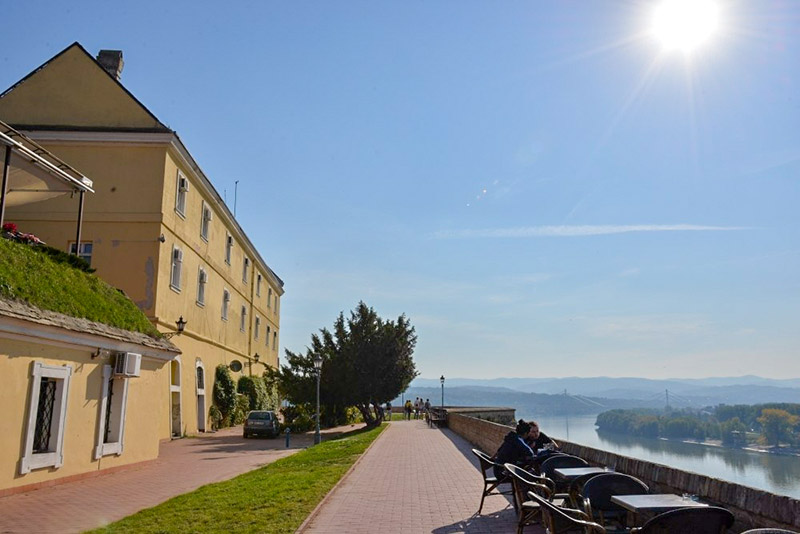
View from Petrovaradin fortress by Piroska Koltai - Wine a'More Travel
At the end, let’s close this article with the lines of Oszkár Maurer, the pioneer of raw wines, the wine-apostle of Szerém with German roots and Hungarian origin:
The soul is often in dispute with the common sense, which helps us to make good decisions. Wine is an important drink from this aspect. Those who drink noble wine become noble themselves. Becoming noble is no less than walking the road to perfection and on this road, we can get closer to God.
What else would a wine region be destined for where our ancestors named grapes after Christ, our Lord? Amen.



